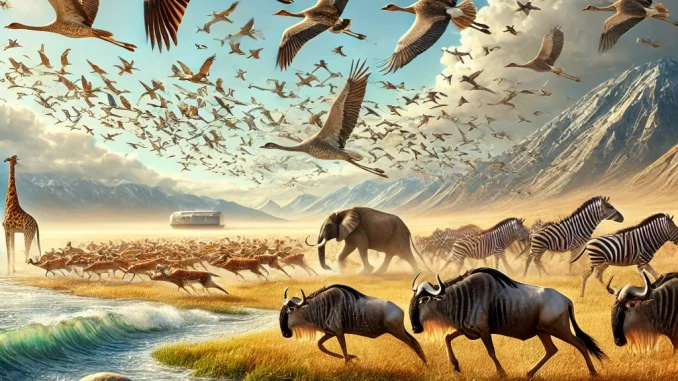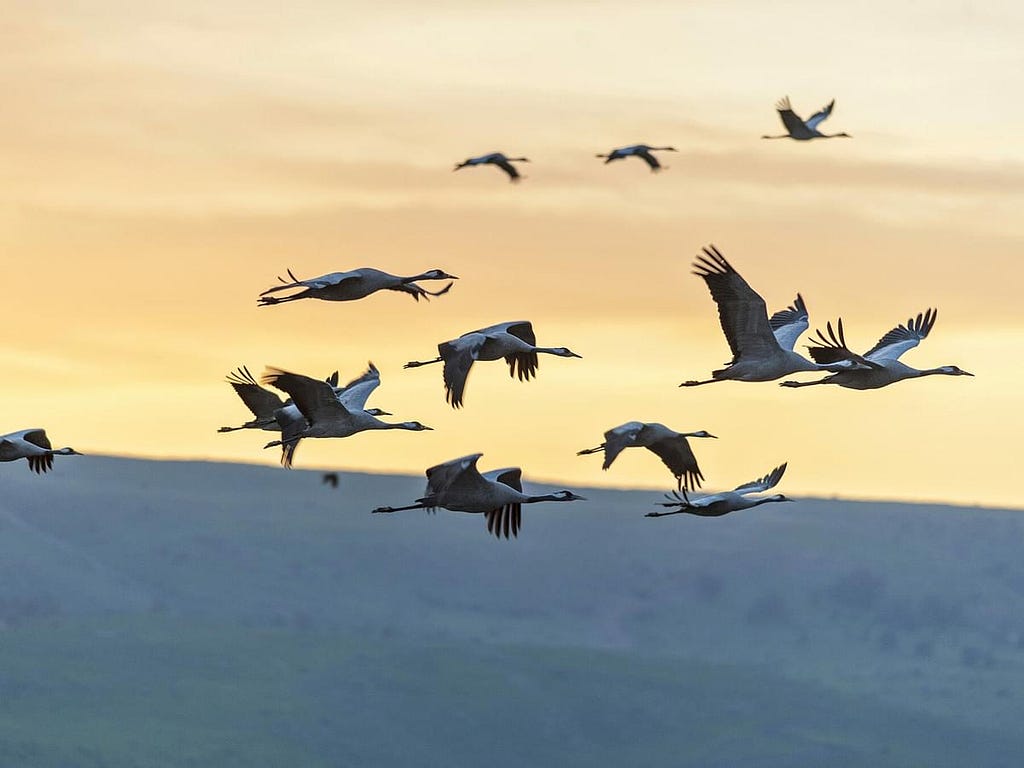
One of the most fascinating groups of animals on the planet are those that migrate. In pursuit of food, mates, or better living conditions, they cover thousands of miles annually, frequently traversing continents and oceans. Their actions and adjustments to these protracted travels are very amazing and shed light on the intricacies of the natural world.
The remarkable accuracy with which migratory animals can travel great distances is one of their most fascinating characteristics. For example, certain bird species might travel thousands of kilometers distant during the winter and yet return year after year to the same nesting place. Scientists are still unsure of how they manage this feat, but it’s thought that they use a combination of magnetic fields, stars, and visual cues to direct them.

Animals that migrate have developed a variety of physical adaptations in addition to their ability to navigate, which helps them withstand the challenges of long-distance travel. For example, the lightweight bodies and specially designed wings of many birds allow them to conserve energy and reduce drag when in flight. Because of their streamlined bodies and extremely efficient metabolisms, several species of sea turtles and whales are able to traverse hundreds of kilometers without pausing for food or rest.
In addition, a variety of amazing behaviors displayed by migrating animals aid in their ability to manage the difficulties associated with migration. For instance, a lot of fish species will come together to create large shoals or migrating swarms, which shield them from predators and enable them to conserve energy by swimming in each other’s slipstreams. Similar to this, during their seasonal migrations, some species, like caribou and wildebeest, establish enormous herds that increase the likelihood of finding food and water and offer protection in numbers.
The incredibly resilient and inventive nature of the natural world is demonstrated by the behavior and adaptations of migratory animals. We can learn more about the intricate relationships and interconnectivity of life on Earth by researching these intriguing organisms. We can even get ideas about how to better safeguard and maintain our planet for coming generations.



Leave a Reply